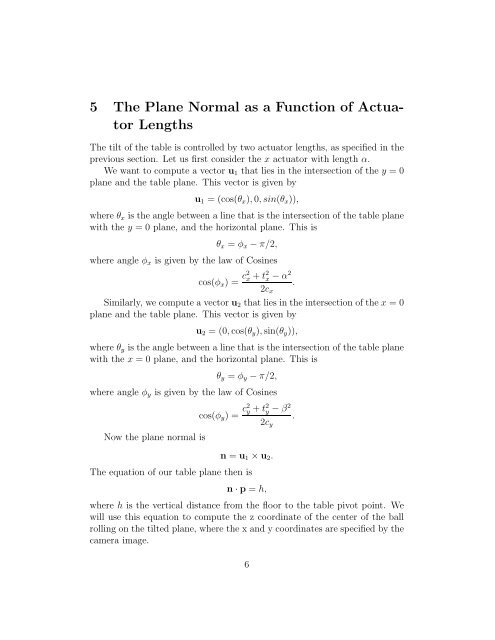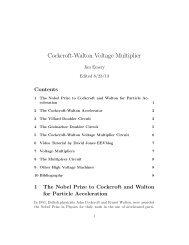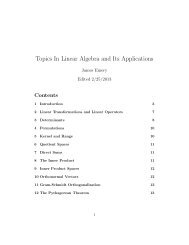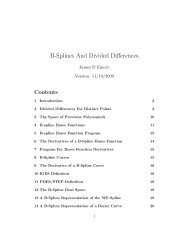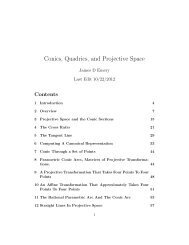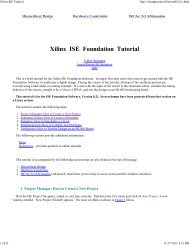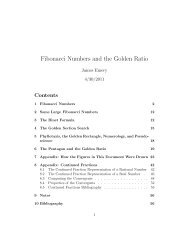Controlling a Rolling Ball On a Tilting Plane - STEM2
Controlling a Rolling Ball On a Tilting Plane - STEM2
Controlling a Rolling Ball On a Tilting Plane - STEM2
You also want an ePaper? Increase the reach of your titles
YUMPU automatically turns print PDFs into web optimized ePapers that Google loves.
5 The <strong>Plane</strong> Normal as a Function of Actuator<br />
Lengths<br />
The tilt of the table is controlled by two actuator lengths, as specified in the<br />
previous section. Let us first consider the x actuator with length α.<br />
We want to compute a vector u 1 that lies in the intersection of the y =0<br />
plane and the table plane. This vector is given by<br />
u 1 =(cos(θ x ), 0,sin(θ x )),<br />
where θ x is the angle between a line that is the intersection of the table plane<br />
with the y = 0 plane, and the horizontal plane. This is<br />
θ x = φ x − π/2,<br />
where angle φ x is given by the law of Cosines<br />
cos(φ x )= c2 x + t 2 x − α 2<br />
.<br />
2c x<br />
Similarly, we compute a vector u 2 that lies in the intersection of the x =0<br />
plane and the table plane. This vector is given by<br />
u 2 =(0, cos(θ y ), sin(θ y )),<br />
where θ y is the angle between a line that is the intersection of the table plane<br />
with the x = 0 plane, and the horizontal plane. This is<br />
θ y = φ y − π/2,<br />
where angle φ y is given by the law of Cosines<br />
cos(φ y )= c2 y + t2 y − β2<br />
.<br />
2c y<br />
Now the plane normal is<br />
n = u 1 × u 2 .<br />
The equation of our table plane then is<br />
n · p = h,<br />
where h is the vertical distance from the floor to the table pivot point. We<br />
will use this equation to compute the z coordinate of the center of the ball<br />
rolling on the tilted plane, where the x and y coordinates are specified by the<br />
camera image.<br />
6


